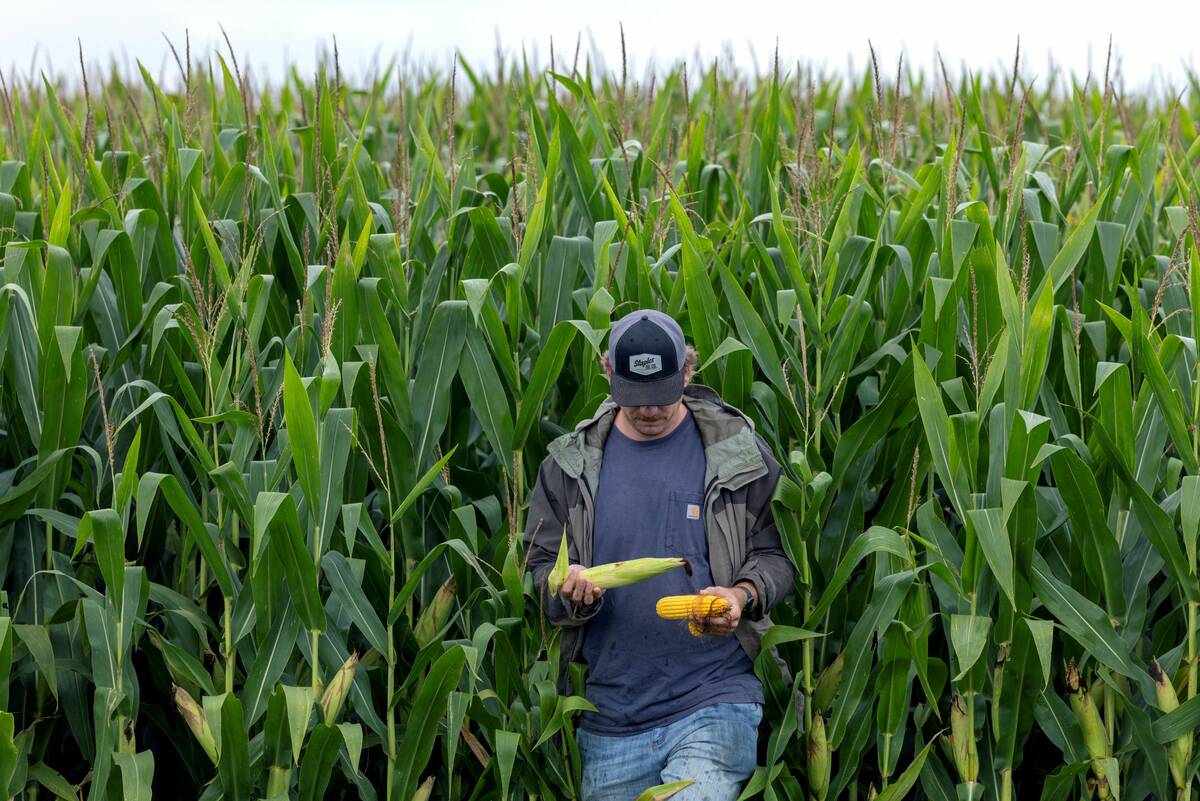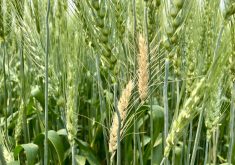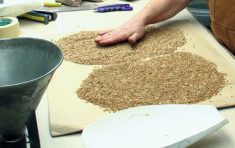Two significant grain specs that aren’t yet factors for a crop’s official grade are now under consideration to join that official list.
The Canadian Grain Commission on Monday put out a call for “grain sector stakeholders” to submit their views before May 10 on a proposal for falling number and deoxynivalenol (DON) to both become official grain grading factors.
Testing for falling number and for DON has “escalated” in importance “due to increasing buyer demand for wheat purchases by specification,” the CGC said in its consultation document.
Read Also

The U.S. corn crop could be the biggest ever. That’s terrible news for America’s farmers.
The USDA predicts a record corn crop for U.S. farmers, who question the agency’s accuracy amidst high debt and low crop prices.
Both of those specifications “increasingly play a critical role in grain contracts and the assessment and price that grain sector participants, including producers, receive for their grain.”
Also, advances in technology now allow direct testing for both characteristics, using methods that “are increasingly accessible to the sector,” the CGC said.
The commission, in its consultation, wants to know whether stakeholders support use of falling number and DON as grading factors, and what the impacts would be for those stakeholders if those factors are added.
From the grower’s standpoint, adding falling number and DON as official grading factors could lead to “greater price transparency,” the CGC said.
Producers have no visual means of assessing falling number or DON values themselves, “but these specifications often play a critical role in the assessment of, and price received for, grain deliveries.”
A falling number test, done by passing a plunger through a sample of ground wheat mixed with water, is used to gauge sprout damage in wheat by measuring viscosity — an indicator of elevated levels of the enzyme alpha-amylase.
The level of alpha-amylase in wheat kernels rises in response to hormones triggered by germination and leads to lower viscosity and a lower falling number. A falling number of around 300 seconds shows wheat is of sound end-use quality for most milling, bread baking and pasta making processes.
For official grading purposes, the CGC instead visually assesses whether grain is sprouted or severely sprouted as “rapid, low-cost proxies” for alpha-amylase activity or falling number.
Apart from the official grade, however, the grain industry often uses falling number as a specification in sales contracts with buyers of Canadian wheat. Visual assessment of sprout damage alone doesn’t accurately reflect actual alpha-amylase levels in grain, the CGC said.
DON, or vomitoxin, is produced in grain infected by certain types of fusarium head blight, a fungal disease of wheat, barley, oats, rye, and corn which produces shrivelled, chalky white kernels.
For official grading, the CGC visually inspects grain for fusarium-damaged kernels (FDK) to gauge DON levels. FDK, however, isn’t a precise predictor of DON levels and “may not ensure sufficient accuracy for grain contracts with defined DON specifications,” the commission said in its consultation document.
In the document, the CGC proposes to add falling number as an official grading factor and set a minimum falling number level that applies to all grades within a class. It would also consider removing the existing “sprouted” and “severely sprouted” kernel official grading factors.
The commission also proposes to add DON as an official grading factor with a maximum allowable level that applies to all grades within a class. FDK would remain an official grading factor, though, since fusarium has “other significant end-use quality impacts” apart from DON level.
Falling number and DON grading factors “would not take precedence over other official grading factors,” the commission proposes. Other grading factors such as mildew, frost and percentage of hard vitreous kernels (HVK) “would continue to apply.”
Before any official changes are made to CGC grading factors, the Eastern and Western Standards Committees would also be required to conduct “a careful review and consideration,” the commission said.
Some grain sector groups have pressed for years to add DON and falling number measurements in official grading. The Alberta Wheat Commission made such a request in 2016.
“We may not be getting paid for the quality that we are getting if you’re not measuring those things because we are using (visual) proxies” instead of objective measurements, Kevin Auch, AWC’s chair at the time, told the Manitoba Co-operator.
“We don’t want them to do anything that is impossible, but there is an objective measure for something that millers do care about and feeders too (when it comes to DON).” — Glacier FarmMedia Network












